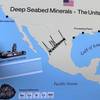Remembering Peter Stanford
Peter Stanford, founding president of the South Street Seaport Museum passed away on Thursday morning, 24th March 2016. We have lost our founder. We have lost a passionate advocate for our work.We have lost a friend.
I first met Peter Stanford when I joined the Seaport Museum as Waterfront Director. He was visiting to advocate for an exhibition on the ship Wavertree. He spoke enthusiastically about a particular model in the Museum's collection, asserting that it must be a part of the project. As the visit wrapped up, he eagerly queried me on my background. He was enthusiastic that I had sailed in square-rigged ships and very generously referred to me as "a square-rigger man."
Peter was a persistent man, endlessly insisting that the apparently impossible could be achieved. And in that - and as long as he and Norma were involved - he was quite right.
Peter's life and work have been written about extensively and the tale is a good one. For us, he will forever be the founder. It was Peter's vision in the 1960s that led to the preservation of the counting houses of the Seaport, including Schermerhorn Row, one of New York City's treasures. It was Peter's work that led to the acquisition and preservation of Ambrose, Wavertree, Peking, Pioneer, and Lettie. And it was Peter's clear articulation of the import of these things that led the fledgling South Street Seaport Museum to a membership of more than 20,000 within five years.
Today we celebrate his life and his achievements. We mourn the loss, but at the same time we carry on the work. Indeed, were it not for Peter and Norma Stanford - and for the legion volunteers, staff, and supporters who signed on to the voyage - we would have nothing left to preserve. And in that spirit we endeavor to carry out our duties as the caretakers of a fleet of historic ships and a cluster of historic structures. Behind the brick, under the slate roofs, upon the decks and entwined in the rigging of these buildings and ships is the very fabric of old New York.
Peter was confident that we will succeed in carrying on what he began. On many occasions he confided that he thought we - the staff, volunteers, and board of the Seaport Museum - were the right crew to carry the place forward. Not just to keep the ships afloat and the buildings intact, but to once again place South Street in the vanguard of historical, cultural, and educational organizations in the City. To use ships, streets, and collections to engage visitors, community, and students in the original port of New York.
We have much to do to be equal to Peter's expectations. But I share the confidence that he placed in us. The legacy of the South Street Seaport Museum lies in Peter's oft-repeated assertion that "this Museum is people." There, we are faithfully carrying on and offering the very best tribute to Peter's life's work.
Fair winds, Peter. We have the watch.
Captain Jonathan Boulware and the Staff and Board of the South Street Seaport Museum











